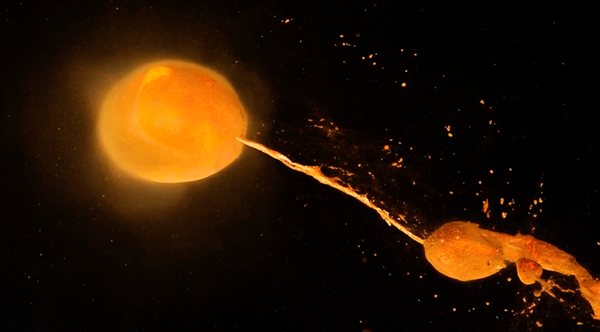Hi folks, tune in every week of 2023 for the best in astronomy from Astronomy Editor Dave Eicher, brought to you by Celestron.
This week, we’ll discuss the formation of Earth’s only natural satellite, the Moon! When we look up at the night sky, it’s easy to see the Moon and assume it’s always been there. But that’s not the case.
About 4.5 billion years ago, a Mars-sized body called Theia catastrophically struck Earth, throwing out a ring of material that eventually accreted into the Moon. (Theia is the name of a Greek goddess who was the mother of another Greek goddess, Selene, the Goddess of the Moon.)
We know this collision occurred because in the 1970s, two planetary astronomers — Bill Hartmann and Don Davis — figured it out. They reached this conclusion largely by comparing lunar rocks collected during the Apollo missions to Earth rocks. They found that the isotopes (different forms of the same element) in both rocks were largely identical, indicating they had a common origin.
This led to what’s now called the Giant Impact Hypothesis, which explains a lot of things about the Earth-Moon system. These include Earth’s spin, the Moon’s orbit, the high angular momentum of the system, the evidence that the Moon was once molten, the Moon’s small iron core, and, of course, those isotopic similarities between Earth and Moon rocks.
If the Giant Impact Hypothesis is true, then the next logical question is to ask: “What happened to Theia?” Well, you’re standing on it now! Most of the Mars-sized impactor actually got absorbed into Earth. Pretty wild, right?
For more information on the Giant Impact Hypothesis and the Moon’s formation, see here: https://www.astronomy.com/science/the-moons-violent-origin/
Follow Astronomy magazine, the world’s best-selling astronomy magazine:
???? Website: https://astronomy.com
???? Subscribe: http://subscribe.astronomy.com
???? Facebook: https://www.facebook.com/AstronomyMagazine
???? Instagram: https://instagram.com/astronomy.magazine
???? Twitter: https://twitter.com/AstronomyMag
Shop Celestron telescopes:
???? Website: https://celestron.com
Follow Dave Eicher:
???? Facebook: https://www.facebook.com/davidjohneicher/
???? Instagram: https://instagram.com/eicher.david
???? Twitter: https://twitter.com/deicherstar










